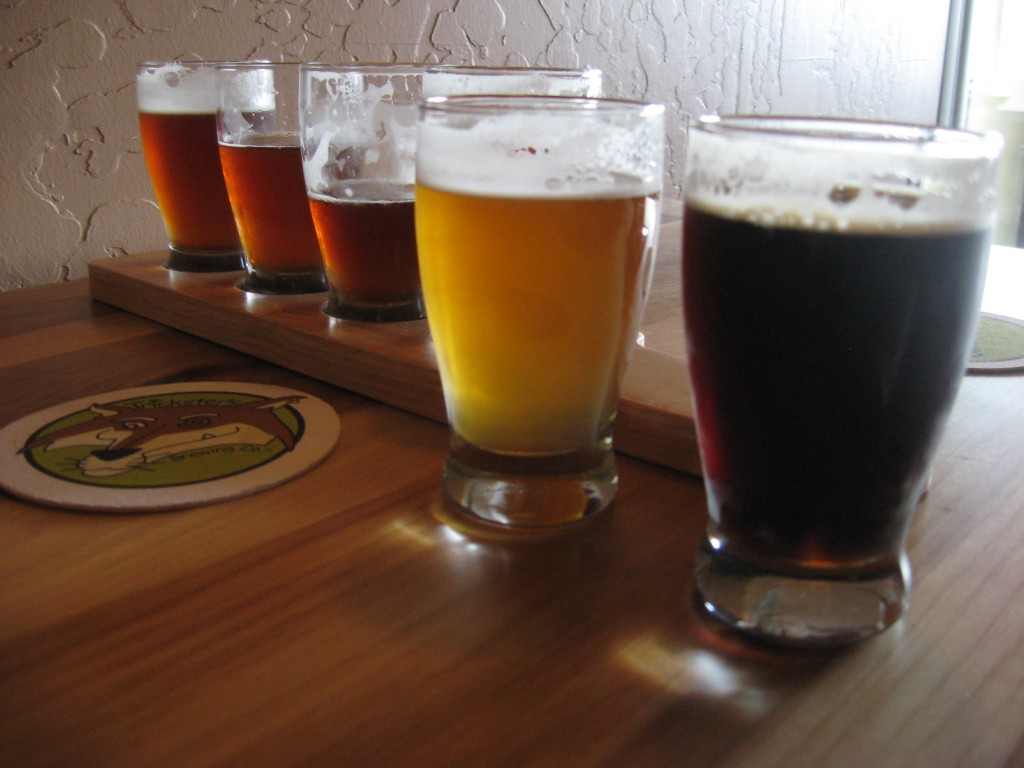Ken Carman is a BJCP judge; homebrewer since 1979, club member at Escambia Bay and Music City Homebrewers, who has been interviewing professional brewers all over the east coast for over 10 years.

By Ken Carman
The Topic: The BJCP Exam

Last September I took the BJCP exam again. For those unfamiliar, this is the exam that ranks beer judges. I’ve heard the uninitiated joke and make fun, thinking this is something straight out of one of my least favorite movies: “Beerfest.” Oh, I can see the humor; I just think “Beerfest” is one vast dump on a very serious endeavor: filled with cliche’s and misconceptions. One would think from watching “Beerfest” all beer related events are guzzling affairs attended by alcoholic nincompoops.
That’s just the opposite of the actual process of judging beer where one often assesses color, clarity, head, aroma long before the brew gets to touch the lips. Then mouthfeel is assessed before swallowing. It is, like any form of judging, a deliberative process. Samples are small and pouring more from the same bottle is unnecessary and even discouraged by some some highly ranked judges, unless necessary. The second bottle is not to be opened unless there’s something about the first that demands it be opened.
The test itself has a well deserved reputation of being harder than some engineering exams and those who grade it being exceedingly tough. It’s a well deserved reputation. The majority of your grade is culled from the written part, a far lesser part is drawn from a blind judging of beer samples. I think this is backwards. A beer judge who doesn’t know the various BJCP beer categories by heart can simply use the guidelines when they judge. They are given a copy. But a judge without refined taste buds is a poor judge indeed.
I’m not arguing in favor of getting rid of the written part. I think any judge needs to know beer basics, although I have ridiculed the concept of making a judge design a recipe for the exam: cold; without knowing the style to begin with, and then punishing them for not getting the specific gravity or IBUs right. I, personally, don’t see how that proves one is a better judge than one who fails at that specific task. Even pro-brewers use devices and computers that measure such things. And brewing is generally an open book process, though not if your a madman brewer like myself who likes to make all kinds of late additions and shifts in recipe.
I certainly think judges should have some knowledge of defects. But actually being able to find those defects; to have the ability to taste these defects? Crucial. But that’s far less important to your grade than the rest.
When I studied for my retake of the exam in September last year I spent summer months polluting beer. I bought cans of corn and used the juice. I used cold sprays, Butter Buds: all to mimic well known defects in beer. I used non-alcoholic beer and IPAs, Imperial Stouts… basically all kinds of beer. I guessed: correctly, that if I worked my way up to finding defects in a Russian Imperial and an Imperial IPA my palette would be more suited for both judging and taking the test.
Yes, I did better on that portion of the test, though not as well as I had hoped.
Of course I’m not sure how they prepared their samples during the test, except one. The last one was to be judged during the test was a Russian Imperial, but what they did is take an Imperial IPA and Guinness Stout and mix them. According to the judges who judged the beer for the BJCP who we were pitted against they felt it didn’t have enough body for a Russian Imperial. The BJCP, of course, has to trust those who do such mixing and the two judges who were pitted against us. And according to many judges I’ve checked with they are also judging these beers blind: without a style guideline to refer back to.
They very well could be wrong in their assessment, just like those who are taking the test. Indeed I believe they were wrong. I know they were. But I admit: I could be wrong. I have been before… once. (Chuckle.)
Now some might say if you mix these two that would have to be the result: less body than a Russian Imperial. But doesn’t that depend upon the mix and how much body the Imperial had? Imperials can have loads of body: indeed the best Imperial IPAs need to have lots of body so as to have decent balance with the hops. A thin Imperial would be a poor Imperial IPA indeed. To me it was almost a perfect clone of Old Rasputin by North Coast with just a few more hops. Old Rasputin is a classic example of the style.
But whether I’m wrong, or right, my point is we should be doing constant taste bud calibrations with judges and judges to be. The few attempts at “calibration” pre-test I have been to are far too quick, far too shallow and far too… well, far too few. You don’t get much education from providing a sample or two of a defect and then moving on. I recommend picking, oh, say DMS, and then doing a session with various styles: progressive from lighter fare’ to bold: all having the same defect. Encourage the judges to do this on their own as well. Then repeat with other various defects.
This would be true training.
This would create better judges, and help separate the “real” judges from the less talented ones. The BJCP site, last time I went to that page, says exactly that, that the BJCP test separates out the “real” judges.
No, it doesn’t.
At least not yet.
